The Bread & Soup Project #63 - French Guiana
"Fert Aurum Industria", or "Work Creates Abundance" - national motto of the country
The Bread & Soup Project continues! First, let’s start with where this country is, because most of us haven’t thought about it, if ever, since some World Geography class in elementary school.
It’s one of a trio of small, sparsely populated countries in the far north of South America, along with British Guiana and Suriname. It’s the last remaining one of the three that has not gained independence (the other two, respectively, from the UK and the Netherlands), and one of thirteen countries that are still colonies… excuse me… overseas territories of France.
In size, it’s roughly the same as South Carolina, or, for my European friends, the country of Austria. In population, however, it has only 5% of South Carolina’s population (again, Euro-folk, that would be only about 3% of Austria’s population), coming in at a mere 292,000 people, over half of whom (151,000) live in the capital, Cayenne. So sparsely populated indeed. 99% of the country is forested, and the vast majority basically unpopulated. About 56% of the population are native to the country, from various ethnic groups. Roughly 9% come from France, 3% from other French territories in the Caribean, and the balance mostly from neighboring countries - Brazil and Suriname, plus a fairly large Haitian refugee group.
You know I like my flags. Officially, the flag of the country is the flag of France, but there are unofficial flags as well. Until 2015, this was the main flag used. The green and yellow, respectively, represent the countries main industries - forests and minerals. The red star is for socialism.
Beginning in 2015, this became the new unofficial flag - a stylized outline of the country. Green for the forests, red for the people, blue for the ocean, yellow for the minerals, and black for the petroleum and oil.
The cuisine shares a lot with isles of the Caribean, and that of northern Brazil. Given the location, seafood is important, along with root vegetables, smoked meats - preserved from both the forests and oceans, and coconuts. The soup turned out to be an easy choice. Person after person avowed that Braff is pretty much the national soup, though my sense is, after going through a huge number of recipes, that for the 292,000 people who live there, there are 293,000 ways of making the soup. The bread was less straightforward. There’s clearly a French influence, and different types of baguettes and plaited breads popped up regularly in my search. At the same time, there was nothing particularly interesting about them, and when I saw that a common accompaniment to stew-like dishes is a type of Roti, I decided to try my hand at it again. I’d tried a version when doing the entry in this project for Antigua & Barbuda, and while good, they just weren’t… right.
I went straight for an online personality, Matthew, who specializes in French Guiana’s dishes, and his step by step video on how to make roti. It worked perfectly, and included a final step I’d never seen before that made all the difference. Really, just watch his video and you’ll be making the best roti you’ve ever tried. I made a third of his recipe since I was making this just for me - 2 cups of bread flour, 2/3 tsp of baking powder, 1 Tb vegetable oil, and enough water to bring it all together and knead into a soft but not sticky dough.
Divided the dough into four portions - each roughly 120gm, slightly over 4oz. Cover with a damp paper towel and let sit for 15-20 minutes to relax.
I’m not going to show every intermediate step. Roll out each dough ball into a round, roughly 22cm/10in in diameter. Lightly coat the surface with oil, and then sprinkle flour around it. Cut a slit most of the way through the (more or less) middle.
Loosely fold from the middle to the outer edge, not really pressing down, to form a sort of horseshoe. You want it to be sort of loose and wrinkled, because that’s going to help create the air pockets. That was one of the tips that was important - in my past attempt, I made it more like I’d make a puff pastry dough, flattening it and sealing it tight.
Start at one end and just roll it up into a coil.
Take the tail end and tuck it into the top, and then lightly flatten the coil into a round again. Cover and let sit for another 15-20 minutes or so.
Heat up a cast iron pan (I’m assuming your kitchen, like mine, is not equipped with a tawa, the traditional slightly domed pan that’s designed for really nothing else except making roti) over low to medium heat. Roll out the spiral balls of dough to the same size again - 22cm/10in. That’s approximate, but seemed to be about the right thickness, and also fit the pan.
Skipping intermediate photos again. First cook it dry on each side until it just barely starts to brown and gets kind of bubbly (those air pockets from before) - maybe 1½-2 minutes each side. Then brush first one side and then the other with oil and finish browning both sides - maybe half a minute on each side.
Okay, here’s where the pro-tip came in. Don’t leave them laying around flat, don’t just fold them up and set them aside. If you do that, the roti sort of collapses on itself and gets a little chewy. Instead… and again, watch his video, you sort of pick them up after folding them in quarters and clap them in and out, kind of like playing an accordion. Just a few times. It fluffs it out and separates the layers, and it simply works brilliantly.
The get kind of ragged looking, but that’s exactly what you want in a roti.
On to the soup. But first, we have to prepare our seasonings. Based on the numerous videos watched and recipes read, it seems that premade, maybe even prepackaged, seasonings are a big part of local cooking. And, of course, everyone has their own favorites - but I read about green seasoning, complete seasoning, mushroom seasoning, fresh seasoning, fish seasoning, fish tea, and more. I could have made this soup any of hundreds of different ways with different combinations. I settled on this one and hope I’ve done French Guiana justice.
“Green seasoning” seemed to be one of the most common, though again, too many ways to make it. I went with basil, cilantro, green onion, celery, medium hot green chilies, and garlic.
Literally just thrown in the food processor with a good pinch of salt and just enough water to get it to turn into a well chopped salsa. This is really good. I’m going to use it in many things. Given that I was making a small batch - a single fish, I only need about ¼-⅓ cup of it, and here I have about double that. just from that small quantity of ingredients. It would be hard to really make less.
And, I went with a distillation of a couple of interesting sounding “Complete seasonings” - for which, in modern kitchens, quite a few of the folk who demonstrated this recipe either use Maggi seasoning or Old Bay. This actually tastes a lot like what I recall Old Bay tasting like - we don’t have it here for me to do a taste comparison.
Top row, left to right: 2 tsp sweet paprika, 1 Tb salt, 1 tsp oregano; middle row: 1 tsp mustard, ½ tsp each of cayenne, granulated garlic, black pepper, white pepper; bottom row: ½ tsp ginger, ¼ tsp each of mace, cardamom, allspice, and cinnamon, and ⅛ tsp of clove.
Again, far more than I needed - which was only about a tablespoon. But again, I’ll use it for something.
So, here we have our two seasonings on the left, a small onion, a couple of garlic cloves, a knob of ginger, some dried thyme, and, instead of plain salt, I’m using “mushroom salt” that I happen to have, just since so many versions of this wanted “Mushroom seasoning”. Just a small amount here as the Complete seasoning already has a fair amount of salt. Green onions, celery, a hot red chili, coconut milk, sweet squash, taro root, okra, potato, and two types of sweet potato (in Spanish, batata and boniato or camote), orange and white basically. And the fish - here, a whole grey mullet which I had the fishmonger scale and remove the innards.
Cut the fish in roughly 2”/5cm sections. Now pretty much everyone added in the head and tail. I already knew that these four sections were going to end up being 3-4 meals for me, so I put the head and tail in the freezer to make fish stock another day. Rub the pieces all over with that tablespoon of Complete seasoning and a decent amount of the Green seasoning. Let sit for at least half an hour.
Lightly brown them in a bit of oil in the soup pot, the return them to their marinade bowl.
Add a little more oil if needed and saute the chopped onion, garlic, celery, chili, green onion until soft and starting to color, maybe 5-6 minutes.
Add the sliced or diced squash, taro, potato, and sweet potatoes, the coconut milk, the thyme and (mushroom) salt, and enough water to cover and leave room to add the fish and okra later. Bring to a simmer and cook for about 15 minutes.
Add the fish pieces, cook another 10 minutes, then add the okra, cut in half or thirds, and cook an additional 5 minutes.
Adjust the seasoning - I ended up adding maybe another ½ teaspoon of the mushroom salt. And that’s it, ready to serve!
I like the braff a lot. The flavors are amazing. It’s maybe a little heavy on starchy vegetables for my personal style of eating, but for a now and then tasty and hearty bowl of fish soup, it would hit the spot. The roti are pretty much perfect. I’ll be making those again. I was surprised that he doesn’t use salt in his dough, but it works. And maybe because roti is never really eaten on its own, but always as sort of a scoop for stews or dips, it doesn’t really need it.
Next time in this project, another French overseas territory, we’re off to French Polynesia, in the South Pacific. Stay tuned.








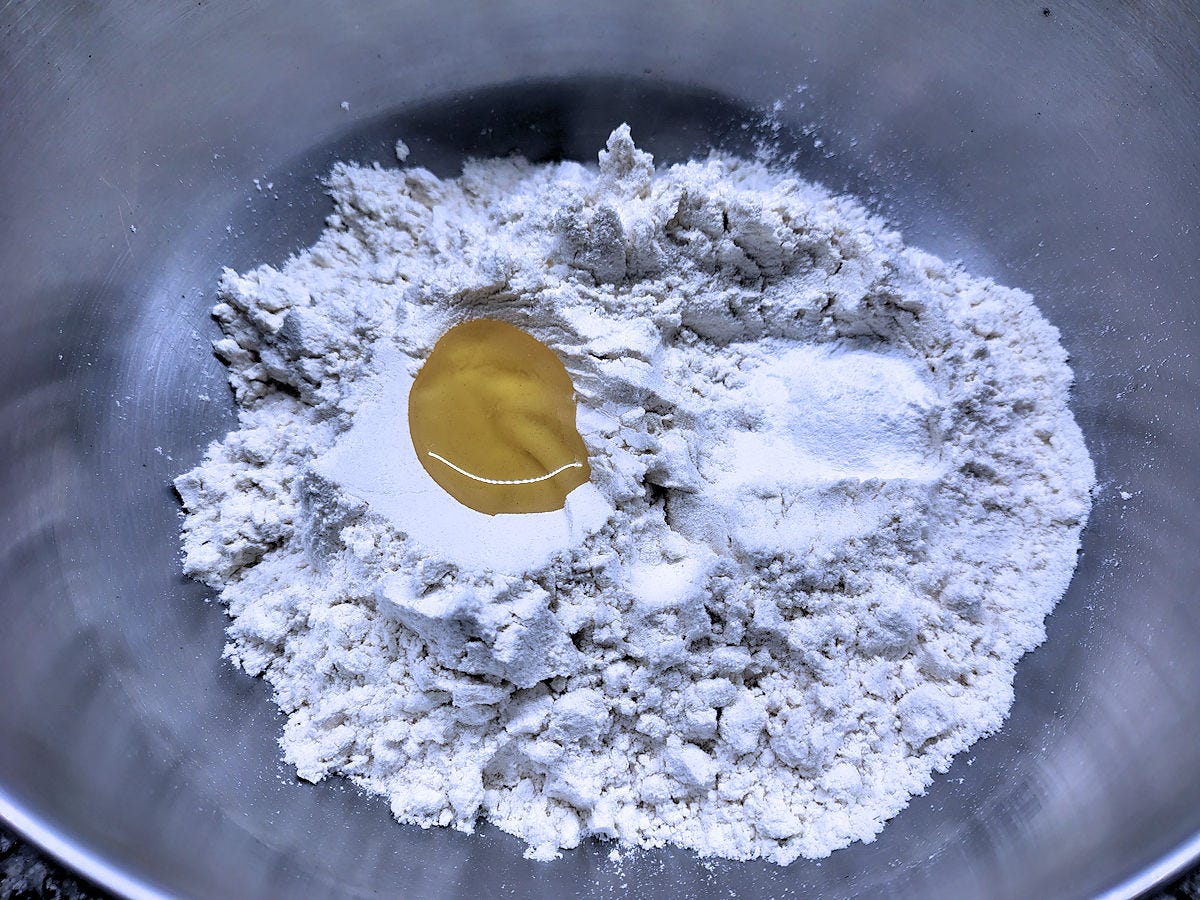
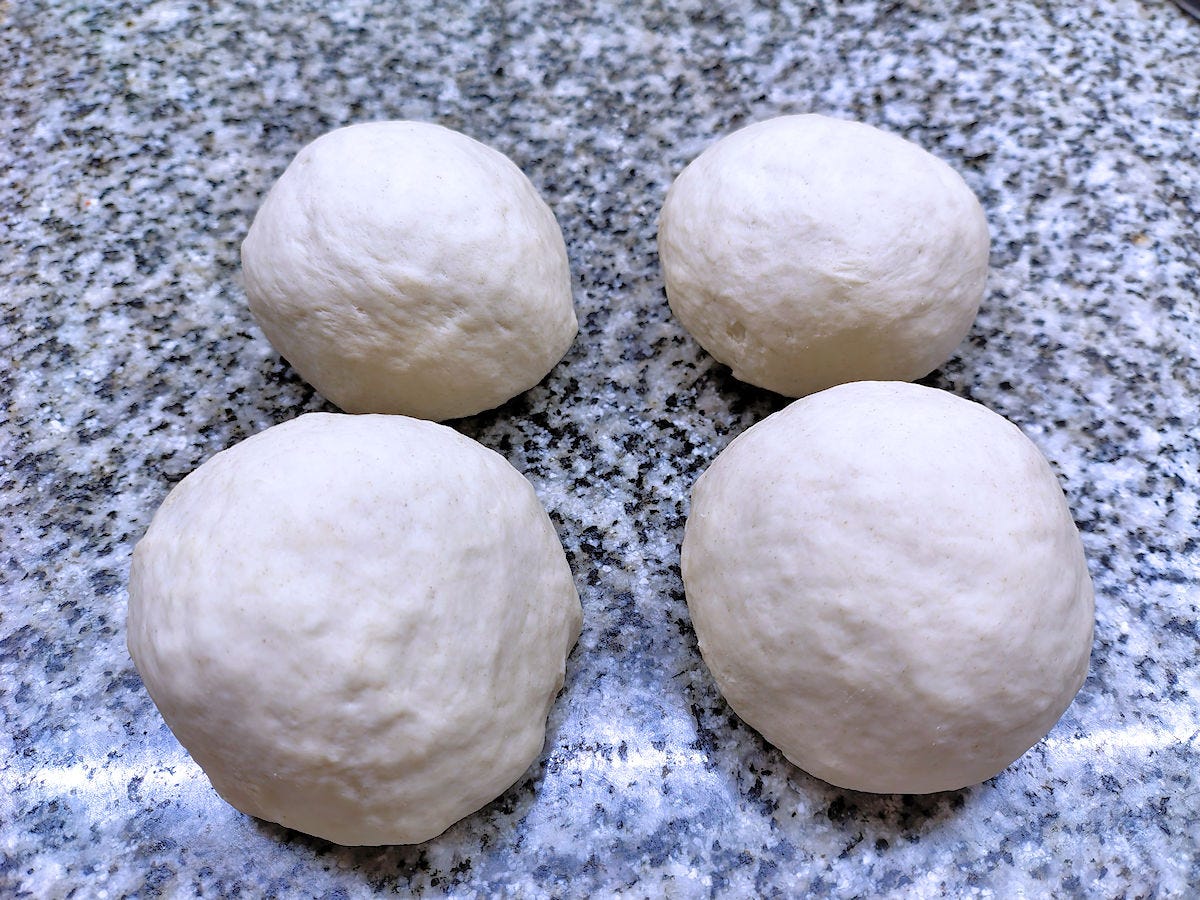


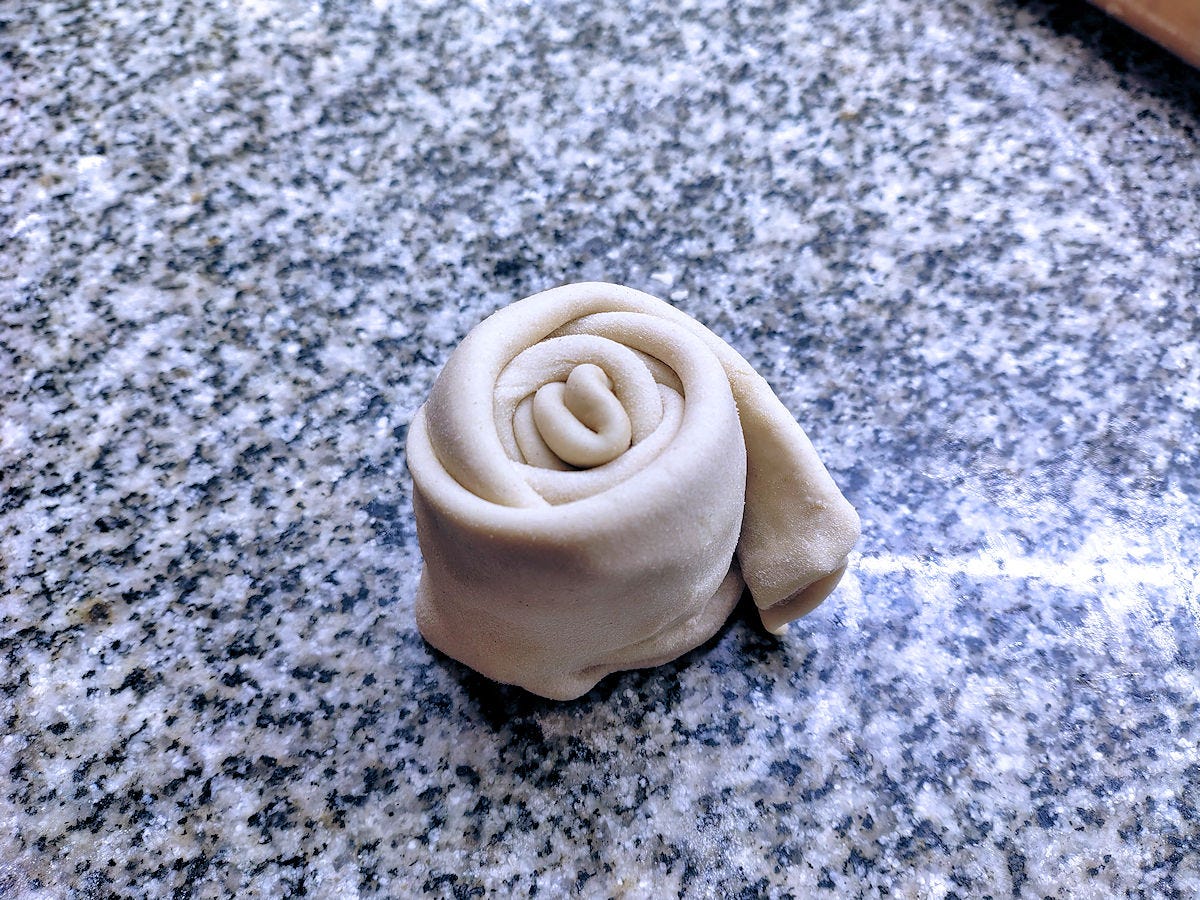

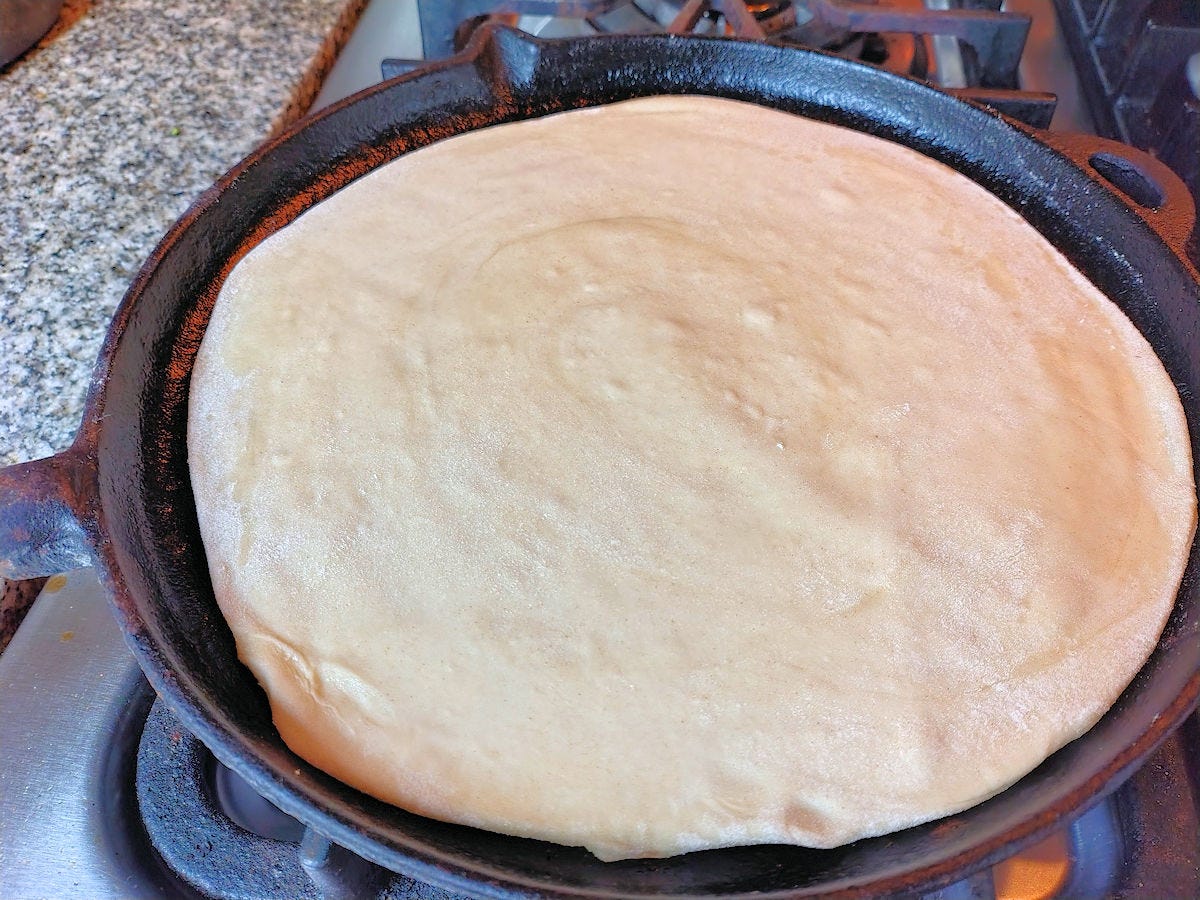

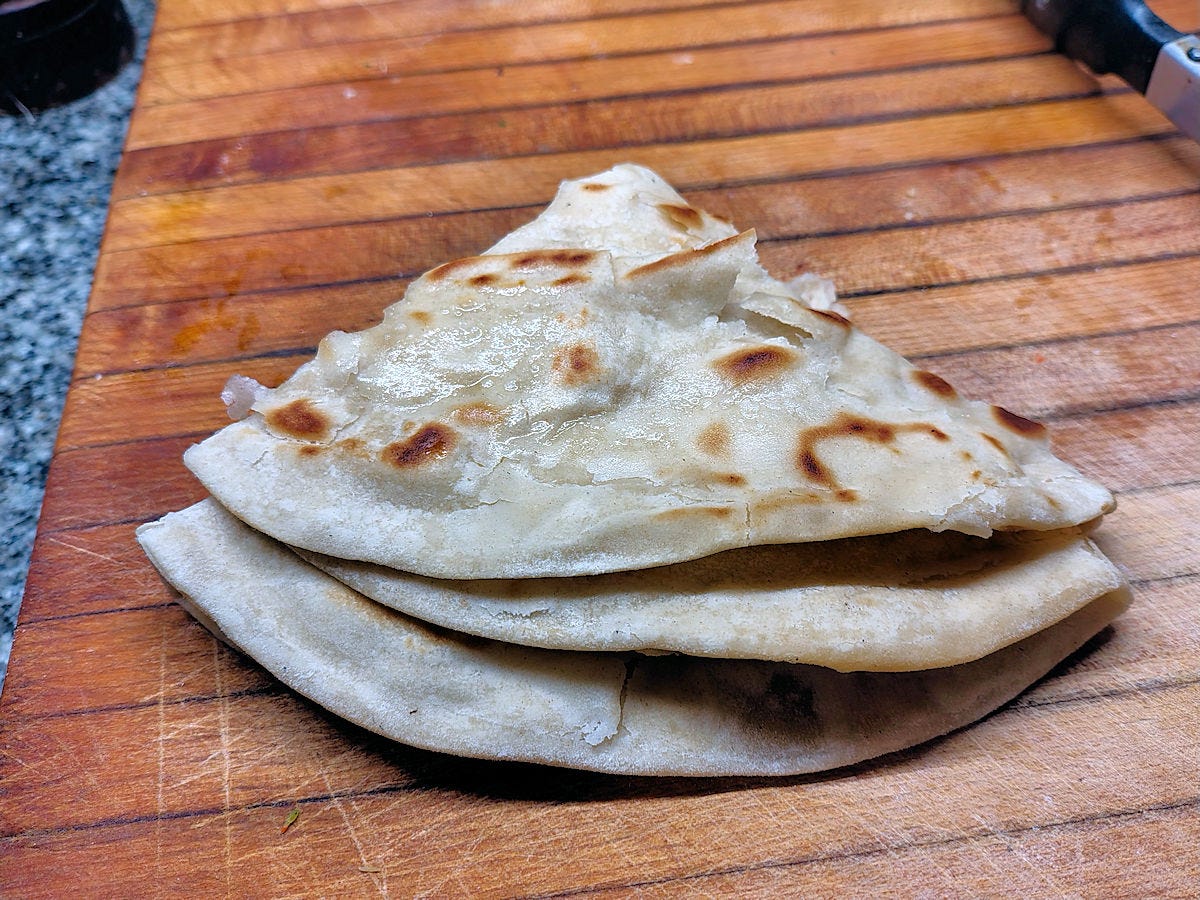
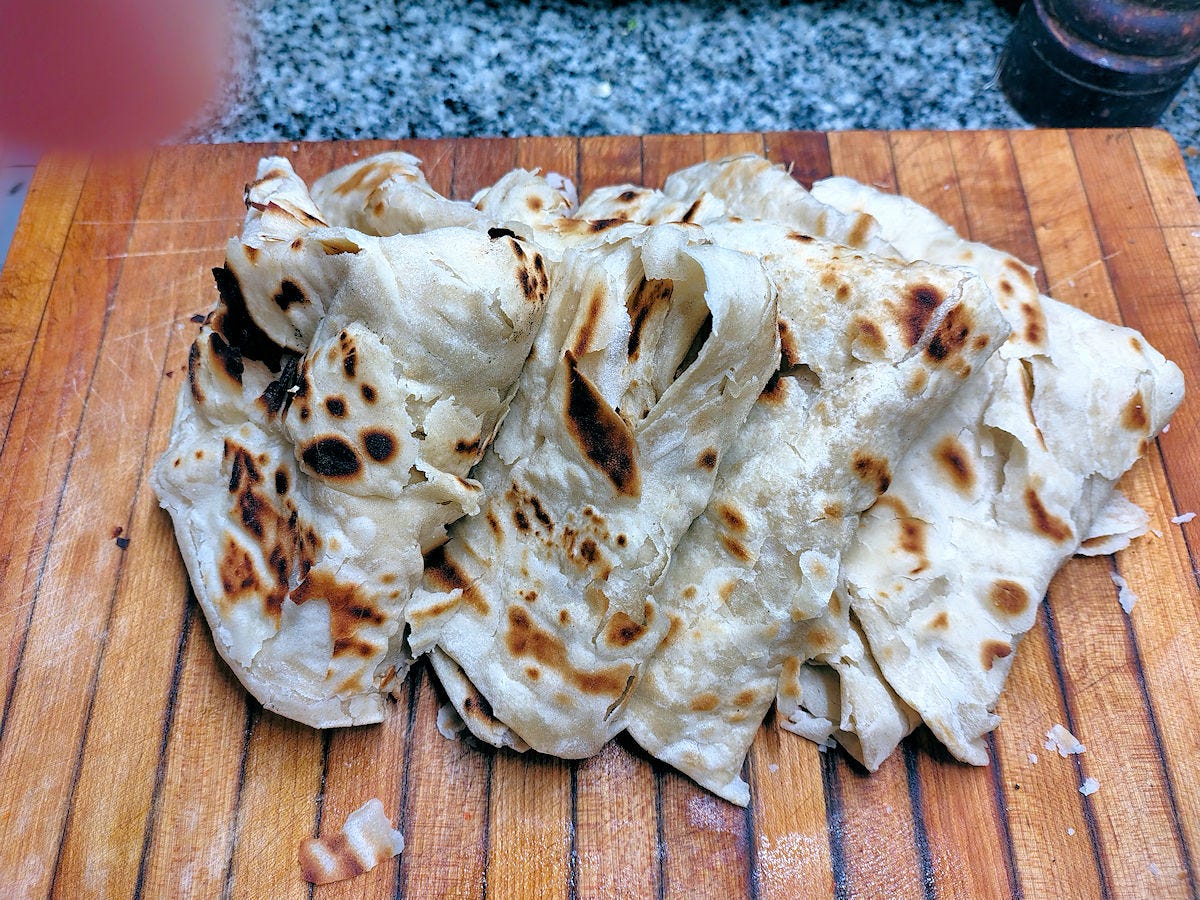

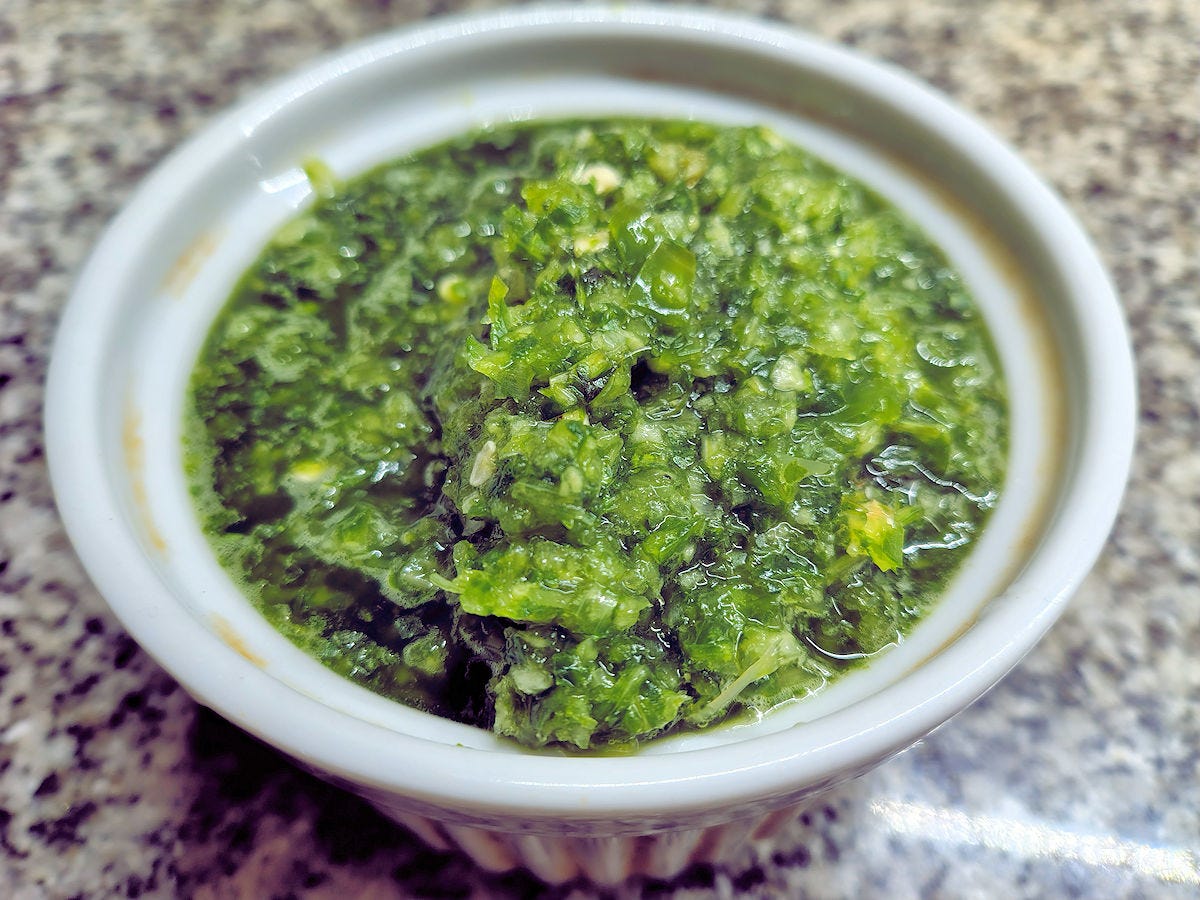
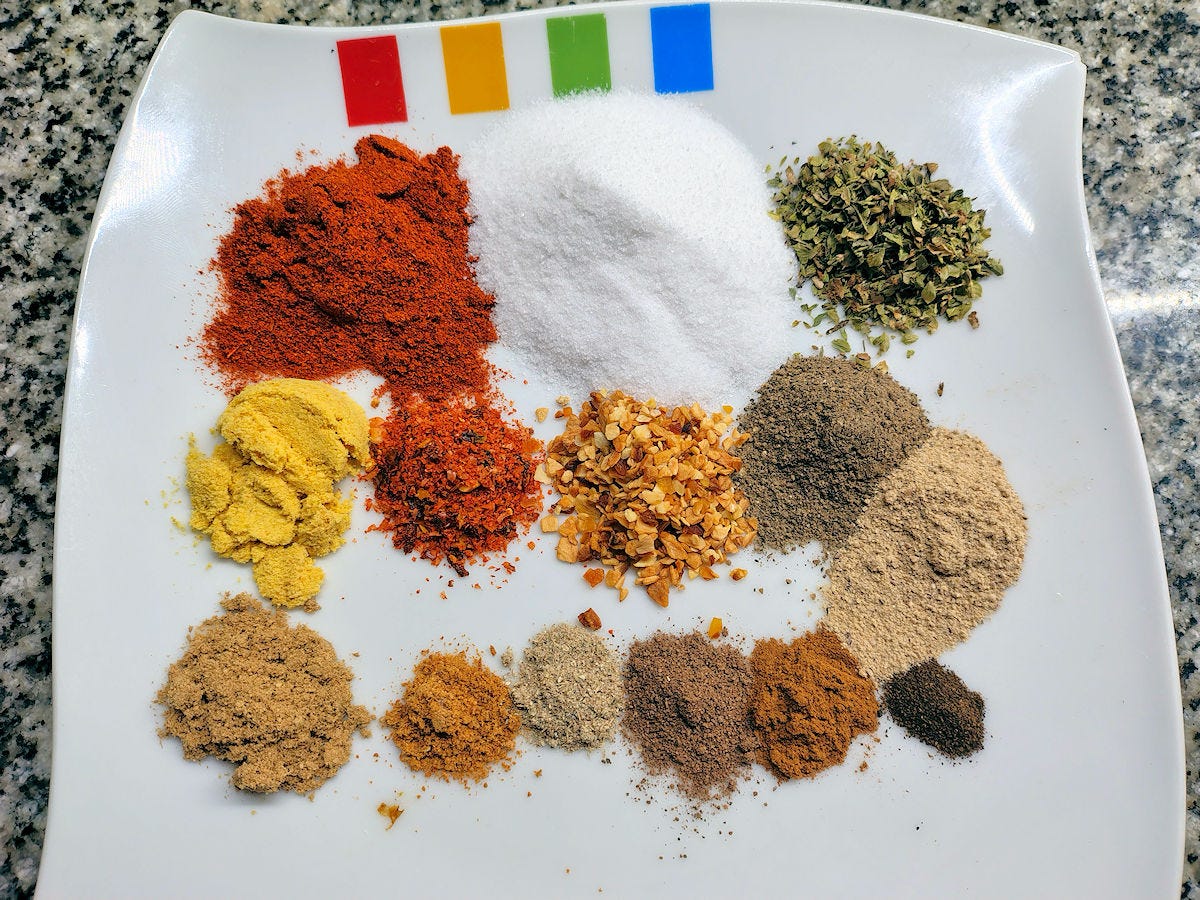
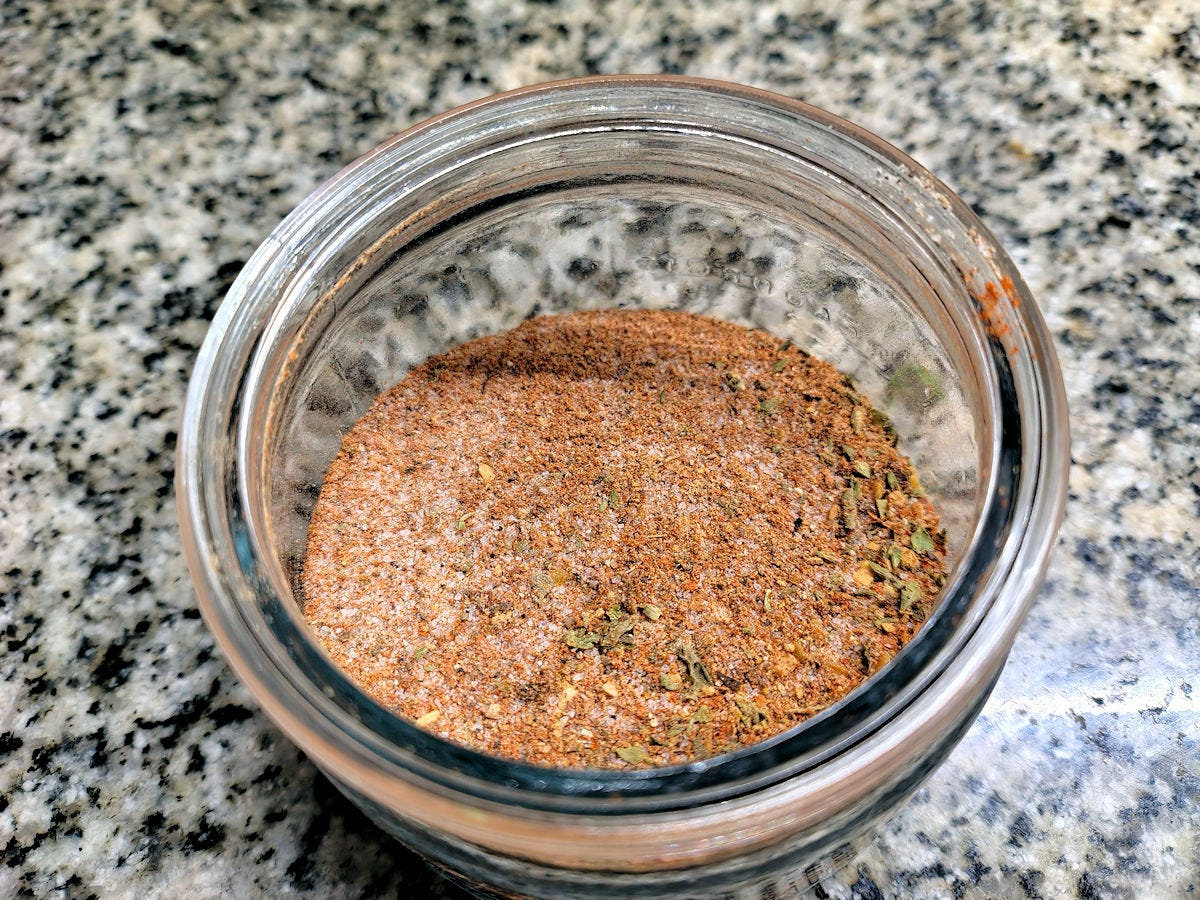

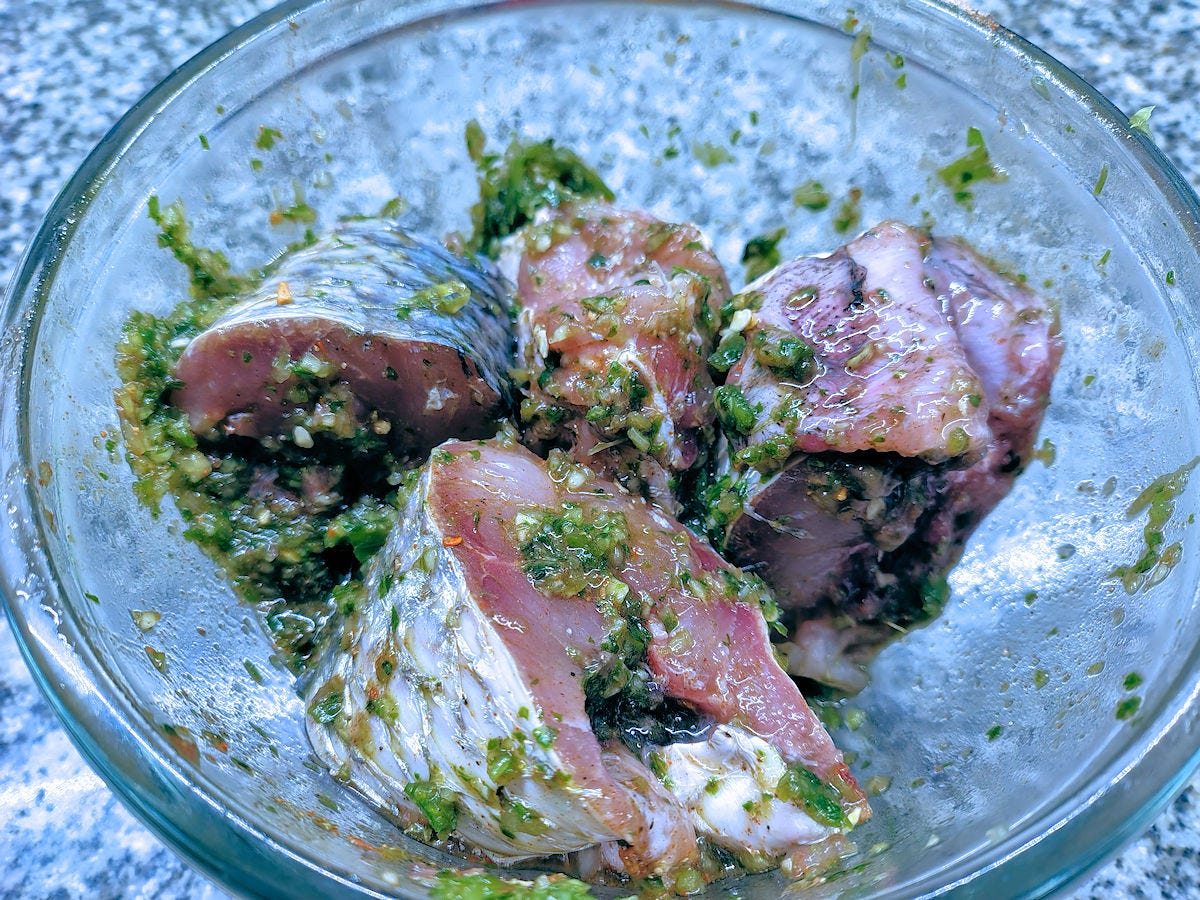

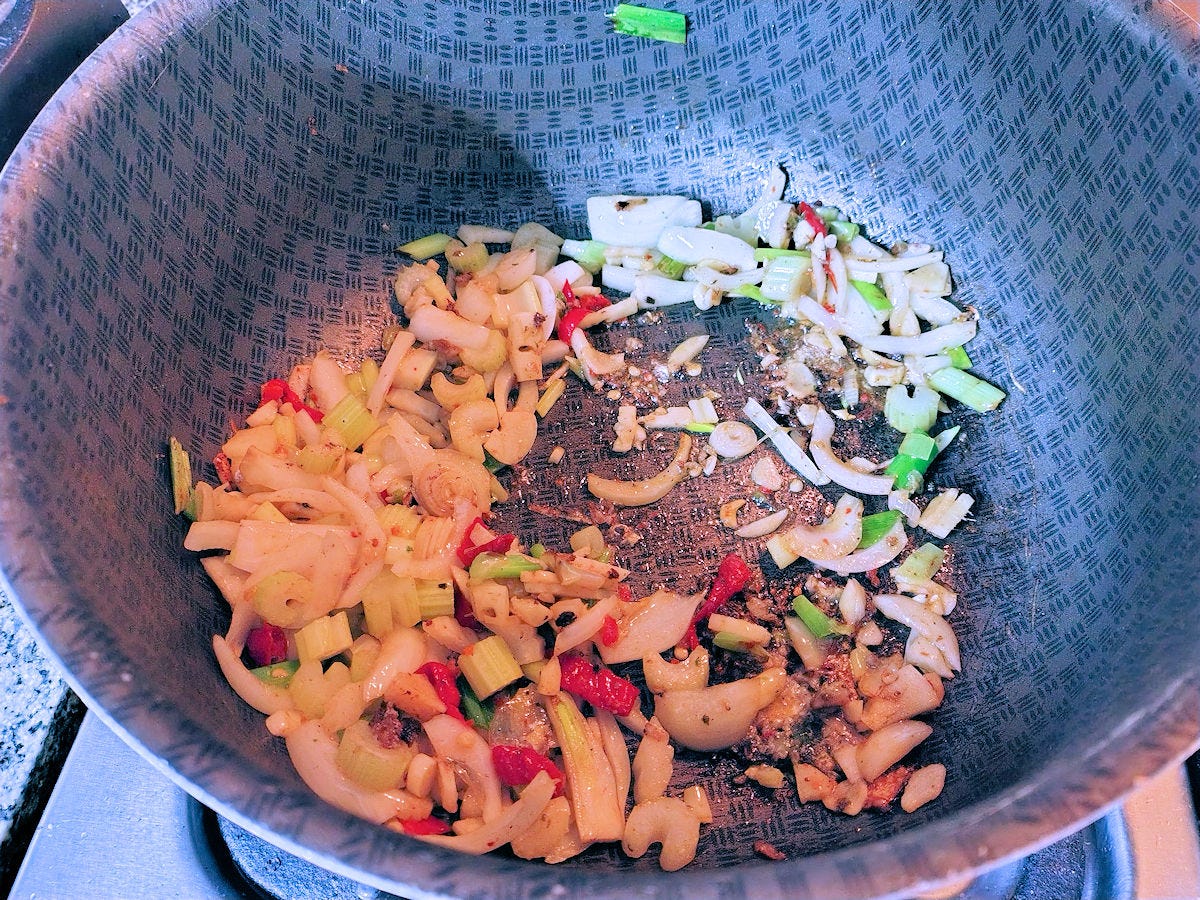


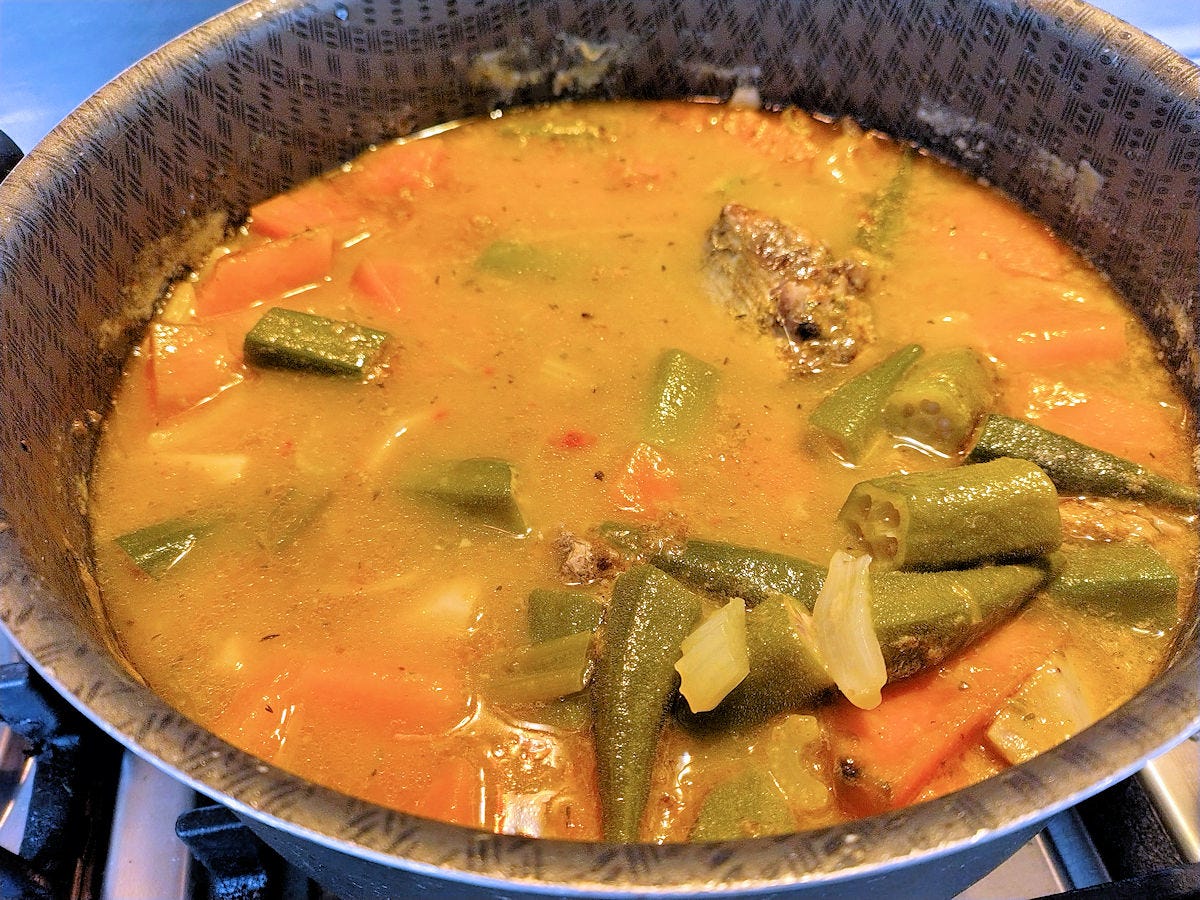
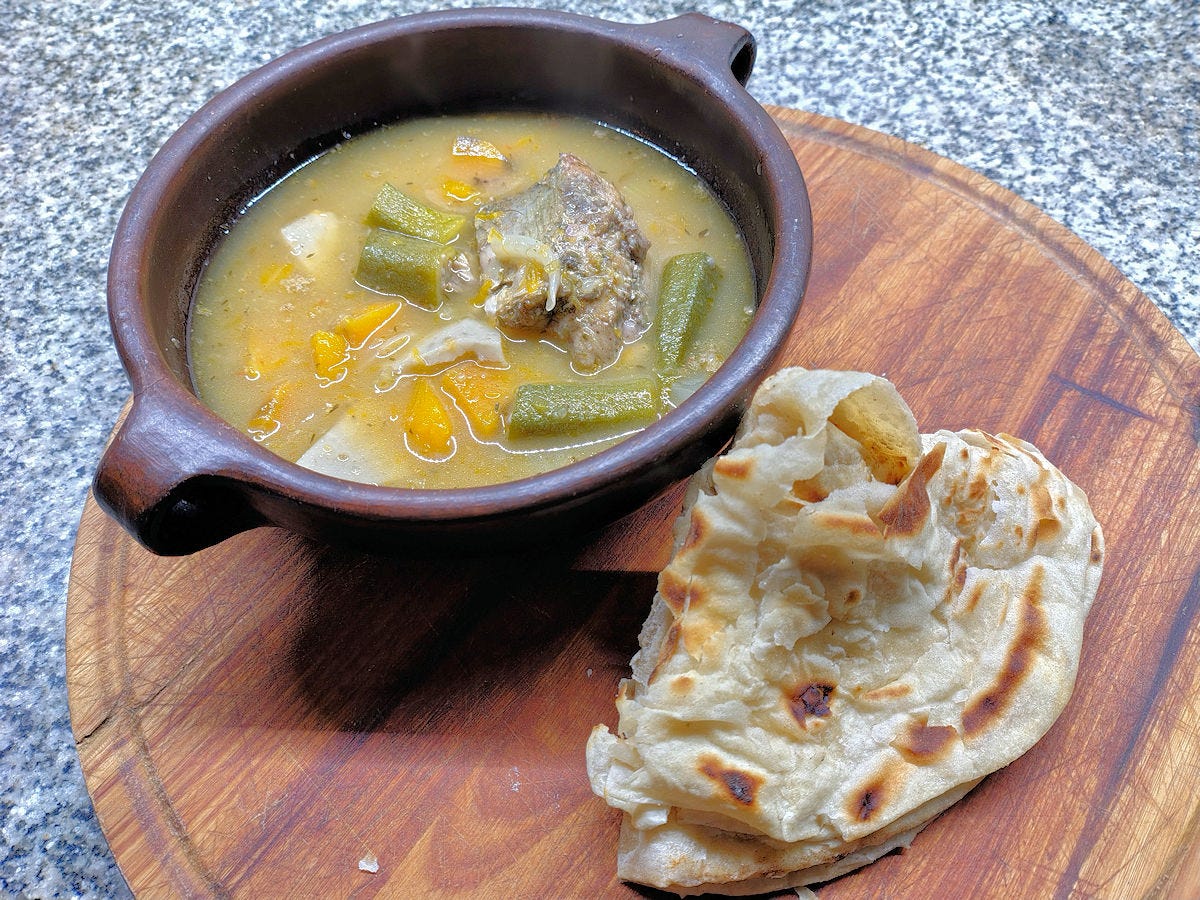
FYI, I'll be migrating from Substack to Ghost over the weekend. You'll still receive posts, and I'll continue to recommend you (Ghost allows recommendations from other platforms). I've had some tech problems with SS that I can;t resolve (partly because it's almost impossible to contact a real person, rather than an AI bot).
Spent a week in Guyane decades ago and don’t recall much except that there were Vietnamese options for dining. I will comment, for what it’s worth, that it’s officially part of Metropolitan France, with full French citizenship and representation in Parliament.